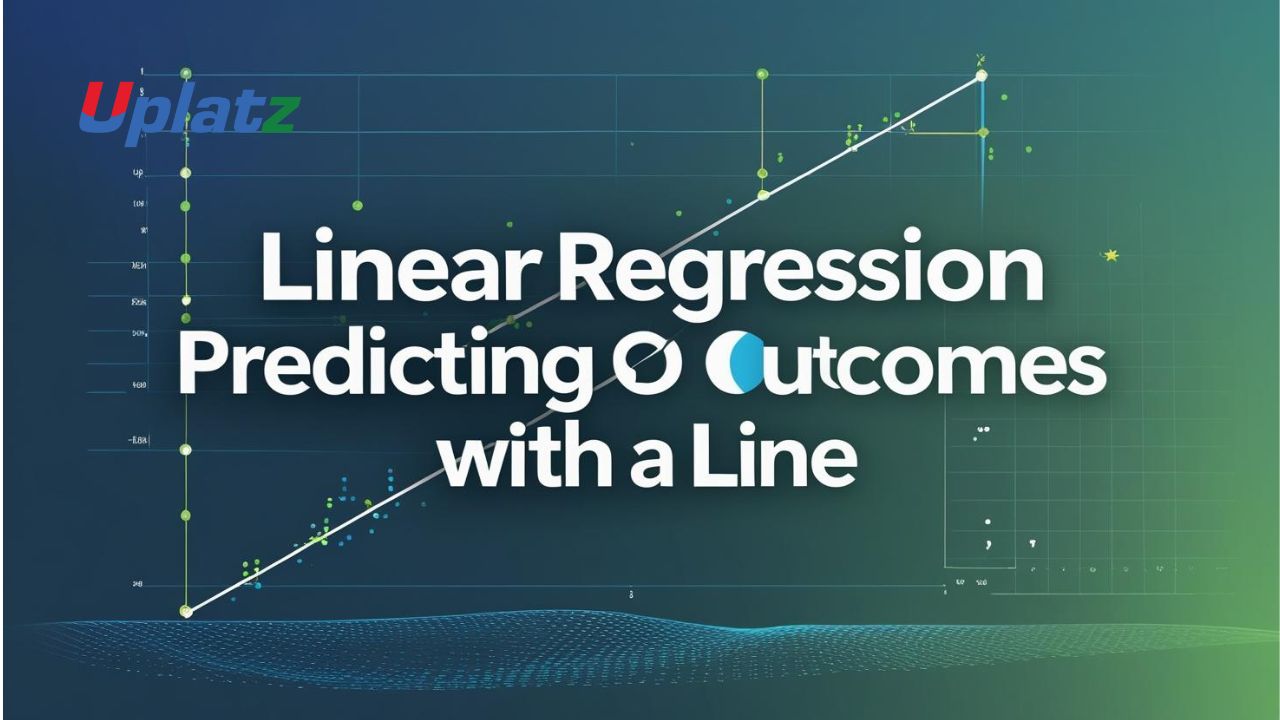 🔹 Short Description:
🔹 Short Description:
The linear regression equation models the relationship between two variables using a straight line. It helps predict outcomes based on known input values and is widely used in analytics and forecasting.
🔹 Description (Plain Text):
The linear regression equation is a foundational concept in statistics and data science, used to model the relationship between a dependent variable (y) and an independent variable (x). It helps in predicting values, identifying trends, and understanding how one variable affects another.
Formula:
y = mx + b
Where:
- y = predicted or dependent variable
- x = input or independent variable
- m = slope of the line (rate of change)
- b = y-intercept (value of y when x = 0)
In statistics, it’s often written as:
ŷ = β₀ + β₁x
Example:
Let’s say you are analyzing how advertising spend affects sales revenue. After plotting data and calculating parameters, you get:
Sales = 5 × (Ad Spend) + 20
This means for every $1 increase in ad spend, revenue increases by $5, starting from a base of $20.
Why Linear Regression Matters:
Linear regression provides a simple yet powerful way to model and understand real-world relationships. It forms the basis of predictive modeling and is often the first algorithm introduced in machine learning due to its interpretability.
Real-World Applications:
- Economics: Predicting GDP based on investment or population
- Marketing: Estimating customer lifetime value from usage patterns
- Finance: Forecasting asset prices based on historical data
- Health Sciences: Modeling impact of exercise on blood pressure
- Machine Learning: Baseline algorithm for regression tasks
Key Insights:
- The slope (m) indicates how much y changes with x
- The intercept (b) shows the starting point of the line
- Regression models are evaluated using metrics like R² (coefficient of determination), RMSE, and MAE
- Residuals (differences between actual and predicted values) help assess the model’s accuracy
- Can be extended to multiple linear regression with several predictors
Limitations:
- Assumes a linear relationship; poor fit for curved or complex trends
- Sensitive to outliers, which can distort the slope and intercept
- Assumes homoscedasticity (equal variance of errors) and normality of residuals
- Not suitable for categorical dependent variables (logistic regression is used instead)
Linear regression is a cornerstone of statistical analysis, valued for its simplicity, transparency, and usefulness in prediction. It bridges the gap between raw data and actionable insights.
🔹 Meta Title:
Linear Regression Formula – Predictive Modeling with Real-World Impact
🔹 Meta Description:
Master the linear regression equation and its role in predictive analytics. Learn how to calculate and interpret slope and intercept, apply regression to real-world scenarios, and understand the assumptions and limitations behind this powerful statistical tool.
